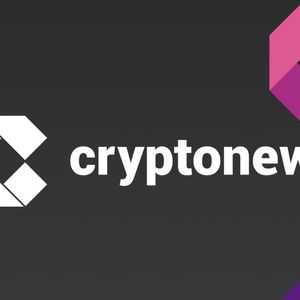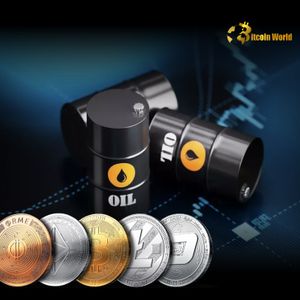In a significant shift within the stablecoin landscape, the total supply of USDT issued on the TRON blockchain (TRC-20) has officially surpassed the supply on the Ethereum blockchain (ERC-20) for the first time ever. This milestone, highlighted by crypto market analyst Maartunn via CryptoQuant on X, shows TRON’s TRC-20 USDT supply hitting an impressive $73.8 billion, while Ethereum’s ERC-20 USDT supply stands slightly lower at $71.9 billion. Why is TRON USDT Gaining Ground? This flip in USDT supply isn’t just a random occurrence; it reflects evolving user preferences and the strategic advantages offered by the TRON network for stablecoin transactions. Several factors contribute to the growing preference for TRON USDT over its Ethereum counterpart: Lower Transaction Fees: This is arguably the biggest driver. Transacting TRC-20 USDT is significantly cheaper than transacting ERC-20 USDT due to TRON’s different consensus mechanism and network architecture. Users save substantial amounts on gas fees, especially for frequent or smaller transactions. Faster Transaction Speeds: TRON generally offers quicker transaction finality compared to Ethereum, leading to a smoother and faster user experience for sending and receiving USDT. Accessibility and Adoption: TRON has made strategic efforts to foster stablecoin usage, particularly in regions where micro-transactions and cost-efficiency are paramount. Many exchanges and platforms now heavily support TRC-20 deposits and withdrawals. Network Effects: As more users and platforms adopt TRC-20 USDT, the network effect grows, making it even more convenient and widely accepted. Comparing TRC-20 and ERC-20 USDT While both represent the same underlying asset – Tether’s US dollar-pegged stablecoin – their implementation on different blockchains leads to distinct user experiences. Here’s a quick comparison: Feature TRC-20 USDT (TRON) ERC-20 USDT (Ethereum) Blockchain TRON Ethereum Transaction Fees Very Low (often fractions of a cent) Variable, can be High (depending on network congestion) Transaction Speed Generally Faster Can be Slower during congestion Smart Contract Compatibility TRON dApps Ethereum dApps (DeFi, NFTs, etc.) Ecosystem Focus Stablecoin transfers, some dApps Extensive DeFi, NFTs, dApps Historical Dominance Growing Rapidly Previously Dominant, Now Second The table highlights the core difference: cost and speed. For simple value transfer using USDT, TRC-20 offers a compelling advantage. Implications of the Flipping: What Does This Mean? The shift in USDT supply from Ethereum to TRON has several implications for the broader crypto ecosystem: Validation for TRON: It validates TRON’s strategy focusing on high throughput and low-cost transactions, particularly for stablecoins. Pressure on Ethereum: While Ethereum remains dominant in DeFi and NFTs, losing the top spot for the most widely used stablecoin version puts pressure on the network, especially concerning its high gas fees before widespread adoption of Layer 2 scaling solutions. User Behavior Insight: It clearly indicates that for the primary function of a stablecoin – acting as a digital dollar for transfers and trading – users prioritize low fees and speed over Ethereum’s extensive smart contract ecosystem. Exchange and Platform Adaptation: Exchanges and wallets must continue to robustly support both versions, but the increased volume on TRON might influence default options or promotional activities. Navigating the Shift: Actionable Insights for Users As TRON USDT continues its prominence, here are some actionable insights: Check Network Fees: Always compare withdrawal/deposit fees for USDT on exchanges between TRC-20 and ERC-20. TRC-20 is almost always cheaper for simple transfers. Verify Network Compatibility: Ensure the receiving wallet or platform supports the network you are sending on (TRC-20 or ERC-20). Sending USDT on the wrong network will likely result in lost funds. Consider Use Case: If you’re interacting with Ethereum-based DeFi protocols, you will need ERC-20 USDT. If you’re simply sending USDT between exchanges or wallets for trading or holding, TRC-20 is often more cost-effective. Stay Informed: Keep an eye on network congestion on both chains, as this can affect speeds and fees, although TRON’s fee structure is more predictable than Ethereum’s variable gas prices. This flipping event is a clear signal of market dynamics at play. While Ethereum laid the groundwork for stablecoins with ERC-20, the demand for cheaper, faster transactions has propelled TRC-20 to the forefront of USDT supply . Conclusion: A New Era for USDT Dominance? The moment TRON USDT surpassed Ethereum USDT marks a significant turning point. It underscores the importance of transaction costs and speed for mass stablecoin adoption and usage. While Ethereum’s ecosystem depth is unmatched, TRON has carved out a crucial niche as the go-to network for efficient USDT transfers. This shift isn’t necessarily a defeat for Ethereum, but a clear indication that different blockchains serve different primary purposes effectively. For stablecoin users prioritizing cost and speed, TRON’s appeal is undeniable, cementing its position as a major player in the stablecoin landscape. To learn more about the latest crypto market trends, explore our article on key developments shaping USDT supply distribution and future predictions.
















